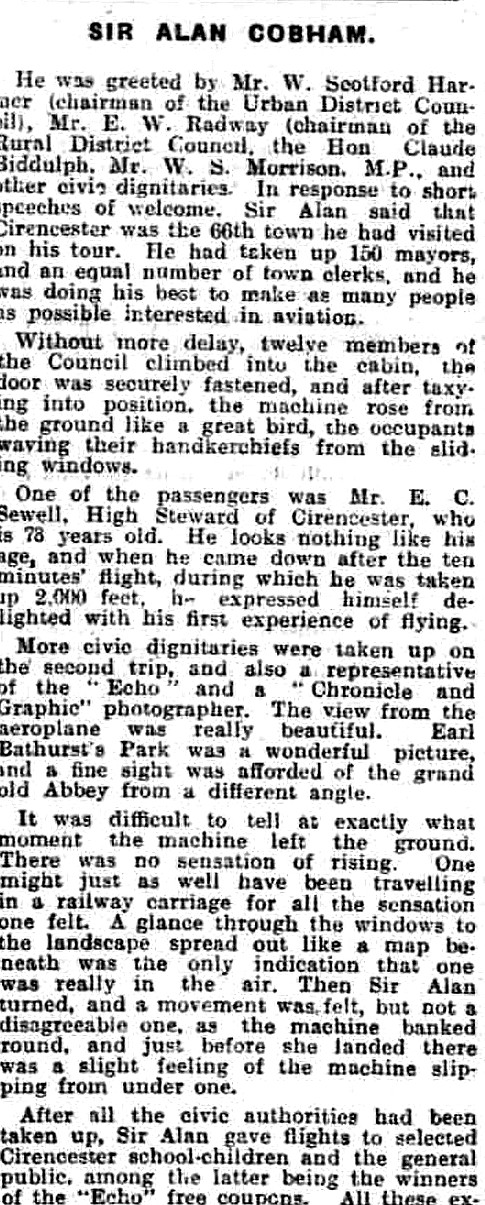Cirencester Racecourse Fields
CIRENCESTER RACECOURSE FIELDS: Temporary Landing Ground
Location: Roughly 1.5nm NNW of Cirencester town centre
Period of operation: 2nd September 1929
AN AUSPICIOUS VISIT
This was Sir Alan Cobham's 71st venue during his 1929 Municipal Aerodrome Campaign. Starting in May and ending in October, the original plan was to visit 107 venues, with two in South Wales and eight in Scotland. In the end due to a couple of crashes and other setbacks, he managed to visit 96 venues - which was of course still a magnificent achievement.
The aircraft he mostly used was the ten-seater de Havilland DH61 'Giant Moth' G-AAEV, named 'Youth of Britain'. As a general rule he aimed to arrive at around 11.00 and then immediately take the local dignitaries for a local flight, or flights. Following this he would take groups of selected schoolchildren for flights, usually at least forty, the cost of these being met by an anonymous donor, who we now know was Lord Wakefield of Castrol Oil fame. He had offered to pay Cobham for up to 10,000 schoolchildren for flights during this Tour.
In most if not all cases a slap-up luncheon had been arranged for Cobham, either at the town hall or a grand hotel. This gave him the opportunity to extol the benefits of a town having a municipal aerodrome/airport. It is of course impossible to say just how much effect this tour had, but, from the early 1930s many towns did decide to construct one. And very soon the emergence of regional airlines followed - but not in Cirencester.
A MICHAEL T HOLDER GALLERY
The second item was published in the Gloucester Citizen on the 29th August 1929. The photo + caption was obtained from: www.oldciren.com/oldciren/archives
Note: The newpaper article, divided into two parts to make it easier to read, was published in the Cheltenham Chronicle on the 7th September 1929.
Note: The last item, the area map, was added from my Google Earth © derived database.
A QUESTION TO BE ASKED?
For me at least, I am at a loss to try and imagine just why Sir Alan Cobham had identified Cirencester as being a worthwhile venue. It is a lovely town even today despite considerable development over the years, but with a population of around 7,000 in 1930, I find it hard to understand why he thought it deserved a visit to promote an aerodrome, let alone a regional airport.
Perhaps in those days it was considered to be a particularly affluent town? However, it does appear that the local single-line railway to Kemble was already in decline by this time, and road connections would have been woeful at best. So, perhaps, this was as good a reason as any?
We'd love to hear from you, so please scroll down to leave a comment!
Leave a comment ...
Copyright (c) UK Airfield Guide


























